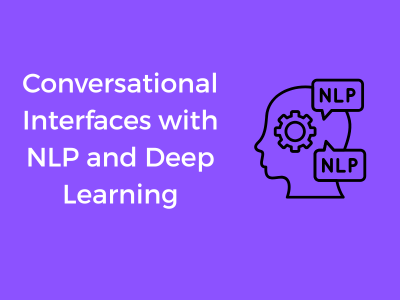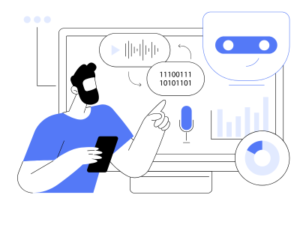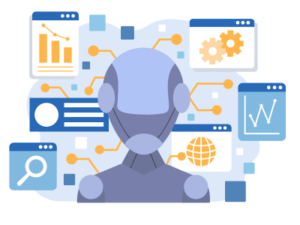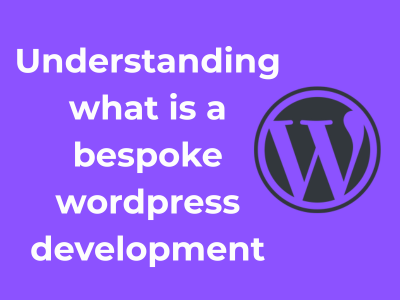Hello there! Let’s take a moment to appreciate the incredible magic behind communicating with machines like they’re our buddies. Ever wondered what makes digital assistants like Siri, Alexa, or the chatbot on your favorite website sound like they truly “get you”? That’s all thanks to Natural Language Processing (NLP).
What is NLP Exactly?
Good question! NLP is a branch of artificial intelligence (AI) that focuses on enabling computers to understand, interpret, and respond to human language in a way that feels natural. It’s like teaching machines how to “speak human.”
Think about the last time a chatbot helped you book a flight or you asked a virtual assistant to set a reminder. Behind the scenes, NLP was hard at work parsing your words, figuring out your intent, and giving you the best possible response. Amazing, right?
How NLP Brings Conversations to Life
The power of conversational AI lies in its ability to piece apart human language, and there are a few key principles at work:
- Tokenization: Breaking your sentences into smaller pieces (like words or phrases) so the machine can analyze and understand them better.
- Context Analysis: It’s one thing to know what words you’ve typed, but NLP goes deeper by determining the meaning behind them. For example, “date” could mean a romantic meeting or a time on your calendar—context is the gateway to clarity!
- Intent Recognition: What do you actually want? Asking for the weather or telling your phone to play your favorite playlist requires the machine to identify your goal.
- Entity Recognition: Machines pull out specific pieces of information like your name, location, or even the brand of coffee you prefer to order (hi, latte lovers!).
It’s a blend of linguistics, statistics, and machine learning that makes this happen seamlessly. Truly, the tech world is a marvel.
From Rules to Machine Learning
Here’s a fun throwback: early NLP systems relied on hand-crafted rules to process language. Imagine creating a set of rules for every sentence structure and possible response. Exhausting, right?
Thankfully, modern NLP has evolved with the help of machine learning (ML). Now, models can learn patterns in language by training on massive datasets, meaning they self-improve over time. The more they observe and process, the better they get at understanding quirks, slang, and even emojis (yes, 😊 counts!).
Why It Matters
Why all this fuss about chatting with machines? Well, NLP does more than chit-chat—it bridges the gap between humans and technology. This means:
- Accessibility: NLP-powered systems make technology available to people who can’t type or read well, fostering inclusivity.
- Efficiency: Automated customer service or virtual assistants can save you from waiting in long queues!
- Personalization: Services that adapt to your preferences make life smoother and happier.
Deep Learning Techniques Behind Conversational Interfaces
Let’s talk about the real superheroes behind conversational AI — deep learning techniques! These techniques are the secret sauce that powers modern conversational interfaces, making your casual chats with an AI feel almost human. But don’t worry, I promise to keep things simple and fun so we can all enjoy the ride.
What Exactly is Deep Learning?
At its core, deep learning is a subset of machine learning that uses neural networks. Think of these networks as digital brains made up of layers that process tons of data to understand patterns. When applied to conversational AI, these “brains” learn how we talk, our slang, our tone, and even our quirks. It’s like training a robot to understand “LOL” doesn’t literally mean you’re rolling on the floor laughing (most times, anyway).
The Building Blocks of Conversational Brilliance
There are some fascinating techniques under the hood of conversational AI that make all the magic happen. Here’s a quick breakdown of a few key ones:
- Sequence-to-Sequence Models (Seq2Seq): These are like translators for conversations. They take your input (“What’s the weather?”) and output a relevant response (“It’s sunny today!”). It’s how systems like virtual assistants respond so naturally.
- Recurrent Neural Networks (RNNs): Specifically designed to handle sequential data. Conversations are, of course, sequences of words, so RNNs help an AI remember context in a chat. However, they’re not perfect — they sometimes forget earlier parts of a conversation.
- Long Short-Term Memory (LSTM): These are like the “boosted” version of RNNs. They’re crafted to preserve context over longer conversations. If you’re continuing a discussion from five messages ago with your chatbot, you might have LSTMs to thank for that coherence!
- Transformers: This is a revolutionary architecture (and not just because of the cool name). Transformers, like those used in models such as GPT or BERT, process entire chunks of text at once instead of one word at a time. This enables them to grasp context much faster and more accurately.
Let’s Not Forget About Attention Mechanisms
Attention mechanisms are the unsung heroes. Imagine if you asked a chatbot, “Can you tell me the capital of France?” You wouldn’t want it fixating on “can you” instead of “capital of France,” right? Attention tells the AI which parts of the sentence are most important to focus on, ensuring it gives you a sharp and relevant reply!
Dialogue Management: The Conversation’s Backbone
Deep learning isn’t just about understanding words; it’s about managing an entire conversation flow. Dialogue management uses clever algorithms to decide what the AI says next. It strives to be logical, engaging, and responsive to your input.
Learning Never Ends
One cool thing? Conversational AI doesn’t stop learning once deployed. Methods like reinforcement learning help these systems improve over time based on feedback — often through interactions with users like you!
Challenges in Training Models for Human-Like Interactions
Alright, let’s dive into the good, the bad, and the tricky when it comes to training AI models to have human-like interactions. It’s one thing to get an AI to respond to a question with reasonable accuracy, but training it to engage in natural flow, context understanding, and nuanced conversations? That’s a whole different beast. 🤖
1. The Complexity of Human Language
Humans don’t speak in constants. We talk in metaphors, riddles, and sometimes even sarcasm — a nightmare for AI to decode. For example, expressions like “it’s raining cats and dogs” aren’t meant to be taken literally. Teaching AI to understand these phrases and respond appropriately involves training on enormous datasets that capture these nuances.
2. Context: The Ever-Evolving Puzzle
Maintaining context in a conversation is crucial, but it’s no walk in the park for AI. If you ask a chatbot, “What’s the weather today?” followed by, “What about tomorrow?”, it should *know* you’re still talking about the weather. Easy for humans, right? For AI, this requires advanced memory architecture, like transformers, and properly tagged datasets — and even then, it’s not perfect.
3. Tone and Empathy — More Than Just Words
AI models often struggle with emotional intelligence. It’s one thing to deliver a factual answer, but it’s another to detect frustration or sadness in your tone and adjust accordingly. Without this understanding, responses can feel cold or even inappropriate, leading to user dissatisfaction. Building emotional intelligence into AI requires tons of labeled data and emerging emotional AI technologies.
4. Dataset Quality Over Quantity
Some like to say, “The more data, the better.” But hold up — throwing a ton of unstructured or low-quality data at an AI won’t magically make it better at chatting. Garbage in, garbage out. The trick is in creating diverse, accurate, and *representative* datasets. For instance, if the training data is biased (e.g., excluding certain dialects or contexts), your AI will mirror that bias. Ouch.
5. Ambiguity: What Did You Really Mean?
Humans leave room for ambiguity all the time: “Can you get me a drink from the fridge?” Now, what drink are we talking about? AI can’t mind-read (not yet!), and if not trained well, it’ll bumble through guesses. Teaching models to handle ambiguous situations confidently is still an ongoing challenge.
6. Real-Time Adaptability
The ability to adapt on the fly is essential but incredibly hard to implement in AI. For example, imagine you’re asking a virtual assistant to plan your day. The assistant not only has to understand the tasks, but should also learn your preferences and adjust to new inputs like, “Oh, scratch that meeting.” Training AI to adapt dynamically to such real-time changes is still a work-in-progress.
So, What’s the Bottom Line?
While AI-powered conversational systems have come a long way, the journey toward truly human-like interactions is far from over. The challenges — from decoding complex language to building empathy — are as exciting as they are difficult. The secret? Lots of innovation, trial, and a whole lot of patience.
But hey, it’s these challenges that make the field of conversational AI as fascinating as it is right now. After all, each hurdle AI scientists overcome brings us closer to interactions that don’t just sound smart but also feel genuine!
- Fun Fact: Did you know that GPT models like me can process conversations spanning thousands of tokens, helping with context retention?
- Reader Tip: Want to train your own conversational bot? Start with small, clearly defined datasets and gradually add complexity as it learns.
The Role of Pre-trained Models in Boosting NLP Accuracy
Alright, let’s talk about pre-trained models, shall we? They’re kind of the celebrity chefs of the Natural Language Processing world. Why? Because just like a chef prepares a killer base sauce that can be reused for different recipes, pre-trained models provide a powerful starting point for a variety of NLP tasks. And trust me, they deserve all the hype they get!
What Exactly Are Pre-trained Models?
A pre-trained model is like that well-read friend who already knows a lot about the world and saves you tons of effort. These models are trained on massive datasets (we’re talking billions of words here) to develop an understanding of language patterns, structures, and meanings. When you use them, you’re tapping into all that knowledge instead of starting from scratch. Think of them as an encyclopedia that you can build on for your specific needs.
Why Are They Game-Changers?
Here’s the deal: Training a model from scratch is hard work. It requires mountains of data, an insane amount of computing power, and a lot of time. Pre-trained models save the day by eliminating most of that heavy lifting. Here’s why they’re such a big deal:
- Efficiency Boost: By kick-starting your project with a pre-trained model, you cut down on the time and resources needed for training. It’s like starting a marathon halfway to the finish line.
- Improved Accuracy: These models come packed with linguistic knowledge gleaned from enormous datasets. That means your application can achieve higher accuracy, even when working with complex, nuanced language tasks.
- Versatility: Whether it’s sentiment analysis, translation, question-answering, or summarization, pre-trained models can do it all. You simply fine-tune them to fit your specific use case.
Famous Players: The Big Names in Pre-trained Models
Time for a quick shout-out to some of the all-stars in this arena:
- GPT (Generative Pre-trained Transformer): Developed by OpenAI, this model is famous for creating coherent, human-like text. Even what you’re reading now owes its magic to GPT!
- BERT (Bidirectional Encoder Representations from Transformers): BERT is another heavy hitter, excelling at tasks like understanding the meaning of words in context. It’s the go-to choice for search engines, including Google.
- T5 (Text-to-Text Transfer Transformer): T5 takes the one-size-fits-all approach to NLP tasks by framing every problem as a text-to-text problem. Imagine summarizing, translating, and answering questions, all with one unified model!
How to Use Pre-trained Models Effectively
So, how do you get the most out of these pre-trained marvels? Here’s some friendly advice:
- Fine-Tune Thoughtfully: Customize the model to your specific task or domain using a smaller set of task-specific data. This process, called fine-tuning, sharpens the model’s focus.
- Leverage Transfer Learning: Transfer learning allows you to apply the knowledge from pre-trained models to other tasks with minimal effort. Why reinvent the wheel, right?
- Test Thoroughly: Evaluate the model on your task to ensure it meets your requirements. Even the smartest models deserve some double-checking!
The Future: Pre-trained Models Are Just Getting Started
In the ever-evolving landscape of AI, pre-trained models are only becoming more advanced. As researchers continue to improve these models, we’ll see even greater accuracy and efficiency, making NLP more accessible and impactful across industries. The possibilities are endless, from creating smarter virtual assistants to automating customer service with finesse.
Creating Context-Aware Interactions: From Simple Chatbots to Advanced Systems
Let’s talk about one of the coolest advancements in technology – creating context-aware conversational systems. You know, the ones that *actually* seem to “get” what you’re saying, like a friendly barista remembering your favorite coffee order or a virtual assistant that feels a little more human.
What Does It Mean to Be “Context-Aware”?
Imagine asking a chatbot, “Can I wear this jacket tomorrow?” If it responds with, “I’m just a bot, I don’t have opinions on fashion,” you’d probably be disappointed, right? A context-aware chatbot, however, would gather relevant information: what “this jacket” refers to, where you are, and what the weather forecast looks like. *Now that’s advanced!* Context-awareness means the system can track the flow of your conversation, understand nuances, and even factor in past interactions to enhance responses.
Going Beyond Simple Chatbots
In older, simpler systems, conversations were often isolated and rule-based. If you asked a basic bot, “What’s the weather like?” it might give you a report but fail completely if you followed up with, “And how about tomorrow?” Why? Because it lacked context! Advanced conversational systems address this issue by using cutting-edge techniques to analyze and remember useful details.
How Is Context Captured in Advanced Systems?
There are some fascinating ways computers emulate human-like memory during interactions:
- Natural Language Understanding (NLU): This involves breaking down what you’ve said (or typed) into its core meaning. It’s like the bot “decoding” your message.
- Session Memory: Advanced systems can save details of your current conversation, so when you say “Can you add coffee beans to the list too?” the assistant knows you’re building a grocery list.
- Personalization: Ever notice how some digital assistants sound tailor-made for you? That happens because they learn from your habits, preferences, and previous choices.
Technologies Helping Us Leap Forward
Here’s the secret sauce behind these breakthroughs:
- Contextual Embeddings: Tools like GPT (Generative Pre-trained Transformer) ensure that words don’t lose their meaning in a vacuum. In the phrase “bank on the river,” for example, it can tell you’re not talking finance.
- Multi-Turn Dialogue Systems: These systems thrive over long conversations, weaving together multiple exchanges into a coherent thread.
- Sentiment Analysis: Identifying whether your input is happy, sad, frustrated, or inquisitive helps fine-tune responses.
Building Smarter Interactions: The Next Frontier
Modern conversational agents are pushing the boundaries of context-awareness to become indispensable tools in our personal and professional lives. The key lies not just in technical improvements, but in finding balance: making these bots smarter *and* more empathetic. After all, what good is a bot that understands everything but feels robotic?
Want to Build One Yourself?
If you’re venturing into the world of chatbots, my best advice is this:
“Start small and focus on building quality conversational flows. Always ask yourself: will this system add value to the user’s life?”
With the right mix of persistence and creativity, who knows? You might just create the next big thing in conversational AI. Remember, the goal is always a little less confusion, and a lot more understanding!
Ethical Considerations in Developing Conversational Interfaces
Let’s have a little chat about the ethics of conversational interfaces, shall we? At first glance, designing a friendly chatbot or virtual assistant seems like a harmless task, right? But trust me, there’s a lot more at stake than making a bot say, “Hi there!” with a bubbly attitude. Ethics play a crucial role in ensuring these systems are not only effective but also responsible.
Why Should We Care About Ethics?
Great question! Conversational interfaces interact with people, and as such, they can influence emotions, decisions, and even behaviors. With that level of impact, developers must tread carefully to avoid:
- Misleading or manipulating users
- Exacerbating social biases or inequalities
- Accidentally violating user privacy
Bottom line: Ethics aren’t optional—they’re essential for building user trust and ensuring these systems are a force for good.
The Big Ethical Questions in Conversational AI
There are some heavy-hitting dilemmas developers face when building conversational AI. Let’s break them down:
- Transparency: Should users always know they’re chatting with a machine? Being upfront about a bot’s identity is important to avoid misleading users—pretending it’s human could undermine trust.
- Bias: AI models tend to mirror the biases present in their training data. For example, if a dataset reflects stereotypes, the chatbot might unknowingly reinforce them. It’s the responsibility of developers to actively work on reducing this kind of bias.
- Data Privacy: Bots often collect personal data to provide accurate and helpful responses. But what happens to that data afterward? Developers must ensure it’s securely stored and handled ethically—no cutting corners.
- Emotional Manipulation: Should conversational bots ever be programmed to tug on users’ emotions to encourage a specific action (like making a purchase)? There’s a fine line between persuasion and manipulation.
Best Practices for Ethical AI Development
The good news? Ethical challenges might be tough, but they’re absolutely manageable with thoughtful design and foresight. Consider these best practices:
- Be Transparent: Clearly communicate when users are interacting with an AI, not a human.
- Audit for Bias: Regularly evaluate and adjust your conversational models to minimize bias and promote inclusivity.
- Prioritize Privacy: Implement strict data protection protocols and only collect necessary information.
- Use Emotional AI Responsibly: Be careful when designing bots that acknowledge or respond to emotions—this should enhance user experience, not exploit vulnerabilities.
Practical Applications: Real-Life Examples and Industry Use Cases
Do you ever wonder how the conversational AI systems you interact with daily are being used in the real world? Let’s dive into the amazing ways NLP (Natural Language Processing) is transforming industries and making our lives easier. From customer service to healthcare, the scope of NLP-driven conversational tools is truly exciting. Buckle up for some real-life examples that will blow your mind!
Customer Support that Feels Human
Raise your hand if you’ve chatted with a brand’s customer service chatbot recently. Chances are, you’ve already experienced how conversational AI makes customer support faster and smoother. Businesses like Amazon, Airbnb, and banks use chatbots to answer frequently asked questions, guide users through troubleshooting, or recommend products – all without the need to wait for a live person. These bots leverage NLP to understand customer intent, even if the language used isn’t 100% clear or direct. The result? Better, more responsive support – often solving issues in seconds!
Personal Assistants in Your Pocket
Siri, Alexa, Google Assistant… familiar names, right? These virtual assistants are perhaps the most well-known examples of NLP in action. They do everything from setting alarms and answering random trivia to controlling smart home devices. NLP is crucial here because it allows these assistants to understand varied accents, regional slang, and even sarcasm. Just imagine how useful it is to say, “Hey Alexa, dim the lights,” and have it done immediately – it’s like magic!
Revolutionizing the Healthcare Industry
Who would have thought that conversational AI could impact healthcare so profoundly? Take healthcare chatbots, for instance. These tools assist patients by answering medical inquiries, booking appointments, or even offering mental health support. For example, a chatbot like Woebot uses empathetic and context-sensitive interactions to help users manage anxiety or stress. In terms of scalability, a chatbot can engage with thousands of people simultaneously, making healthcare more accessible to those unable to visit clinics in person.
Retail and E-commerce Made Smarter
Shopping online has never been this convenient! Retailers use conversational AI to help customers find items, receive personalized recommendations, and get their questions about return policies or sizing answered on the fly. It’s like having a 24/7 store associate! Retail brands like Sephora take it a step further, allowing a chatbot to offer beauty tips, suggest products, and even simulate makeup applications through AR (augmented reality) technologies.
Financial Services Go Digital
The financial industry has embraced NLP-powered chat solutions too, making it easier to access banking services and investment advice. AI assistants can help you check your account balance, track your spending, or even explain options for savings accounts in plain English. Leading banks use conversational AI to understand financial jargon and ensure their AI assistants provide accurate, actionable advice to customers. How cool is that?
NLP in Education and Training
Finally, let’s not forget the educational space! NLP-based systems are now being employed to enhance individual learning journeys. Platforms like Duolingo use conversational AI to coach users on learning new languages, simulate real-world conversations, and provide real-time feedback. Teachers and students alike benefit from AI tutors that help clarify complex subjects in an approachable way.
Why Practical Use of NLP Matters
The practical applications of NLP are about much more than convenience – they’re shaping the way we live and work. Whether you’re a consumer enjoying these innovations or a business leader planning to adopt conversational AI, embracing these tools holds endless potential. Wherever human interaction is key, NLP-powered solutions are making communication faster, smarter, and more relatable.













